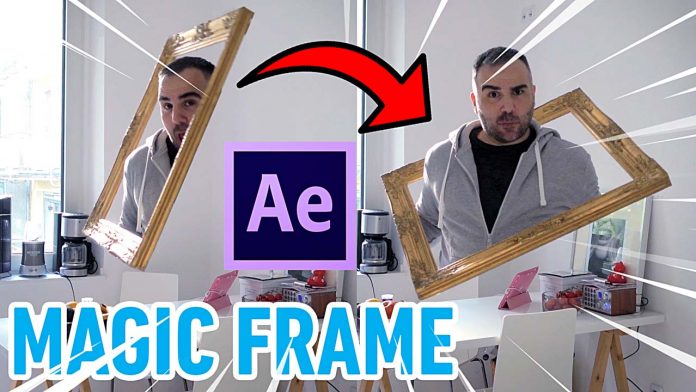Learn how to create this magic frame effect in Adobe After Effect by utilizing a simple masking technique used by creators like Zach King / FinalCutKing.
At first, it might look like the camera in this footage has been tracked or some other fancy masking technique is going on. But it’s actually as simple as just animating a simple mask and adding some camera shake in post.
For this effect to work, just make sure you are shooting the video with the camera set to manual. You don’t want the aperture or the white balance to shift right in between shots. Because we are going to use a frame later in the video (when I’m not in front of the camera) as a clean backplate.
The reason why the camera needs to be mounted is that the camera shake will be added later so the viewer has the impression that some fancy camera tracking has been going on here. But in reality, it’s not. This way we will just mask out the center element (the frame and the talent) with a few keyframes.
This rotoscoping can actually be a pretty tedious process. But in this case, you can get away by just following the shape of the frame and at some in the clip give the head enough space to not be cropped.
Now just add the background back with a clean plate, just one frame from the end of the video and that’s it.
You might also like: https://videomark.net/free-after-effects-2018-template-dynamic-opener/
All that’s left to do now is adding the camera shake which will help to sell this effect. You can do that with a real camera in After Effects but in this case, I just parented all elements (the masked part and the background plate) to a null and just manually dialed in some position keyframes. You could use the wiggle effect in After Effects for that but adding 4-5 keyframes is just a matter of a few clicks.
Just remember to first scale that null by 5-6% so you have enough real estate to move the footage around. You’ve probably seen similar pictures on Instagram and this is a technique to create the same just for video.
The workflow here is basically what Zach King (FinalCutKing https://www.instagram.com/finalcutking) has been using for most of his pieces. Of course, his recent posts have become more complex with 3D and projection mapping etc. But basically this is how he has built his huge followership on Vine and now Instagram.
